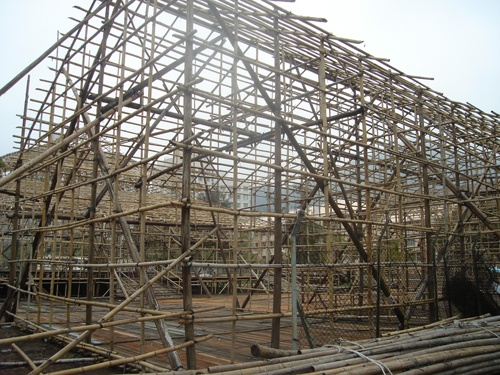Skip over navigation
 A construction company has just won a contract to repair the roof of a cathedral, and needs to build a scaffold that will reach the top.
A construction company has just won a contract to repair the roof of a cathedral, and needs to build a scaffold that will reach the top.
The scaffold needs to reach the roof of the cathedral, and be able support the weight of the company's cement mixer.
The company has asked you to find out the most efficient way of making the scaffolding.
1. Produce a model of the scaffolding using only the drinking straws and sellotape provided.
2. The straw scaffold must be able to hold a beaker of water (which models the cement mixer) at a height of at least 50cm from the floor.
3. The scaffold must stand without support.
The best design will be the one that can bear the greatest volume of water, using the least materials.
You should record the number of straws you used and the greatest volume of water your scaffold would bear.
You should also work out a method to compare your structure with other groups'.
100 drinking straws
1 metre rule (for assessment)
Sellotape
A small plastic beaker (avoid glass in case of breakage!)
Water (and plenty of newspaper or similar to place underneath the scaffold to mop up any spills of water)



Or search by topic
Number and algebra
Geometry and measure
Probability and statistics
Working mathematically
Advanced mathematics
For younger learners
Straw Scaffold
Age 11 to 14
Challenge Level 





- Problem
- Teachers' Resources
 A construction company has just won a contract to repair the roof of a cathedral, and needs to build a scaffold that will reach the top.
A construction company has just won a contract to repair the roof of a cathedral, and needs to build a scaffold that will reach the top.The scaffold needs to reach the roof of the cathedral, and be able support the weight of the company's cement mixer.
The company has asked you to find out the most efficient way of making the scaffolding.
Your brief:
1. Produce a model of the scaffolding using only the drinking straws and sellotape provided.
2. The straw scaffold must be able to hold a beaker of water (which models the cement mixer) at a height of at least 50cm from the floor.
3. The scaffold must stand without support.
The best design will be the one that can bear the greatest volume of water, using the least materials.
You should record the number of straws you used and the greatest volume of water your scaffold would bear.
You should also work out a method to compare your structure with other groups'.
Equipment required (per group)
100 drinking straws
1 metre rule (for assessment)
Sellotape
A small plastic beaker (avoid glass in case of breakage!)
Water (and plenty of newspaper or similar to place underneath the scaffold to mop up any spills of water)
You may also like
Paper Folding - Models of the Platonic Solids
A description of how to make the five Platonic solids out of paper.
Plaiting and Braiding
This article for students gives some instructions about how to make some different braids.
Celtic Knotwork Patterns
This article for pupils gives an introduction to Celtic knotwork patterns and a feel for how you can draw them.

